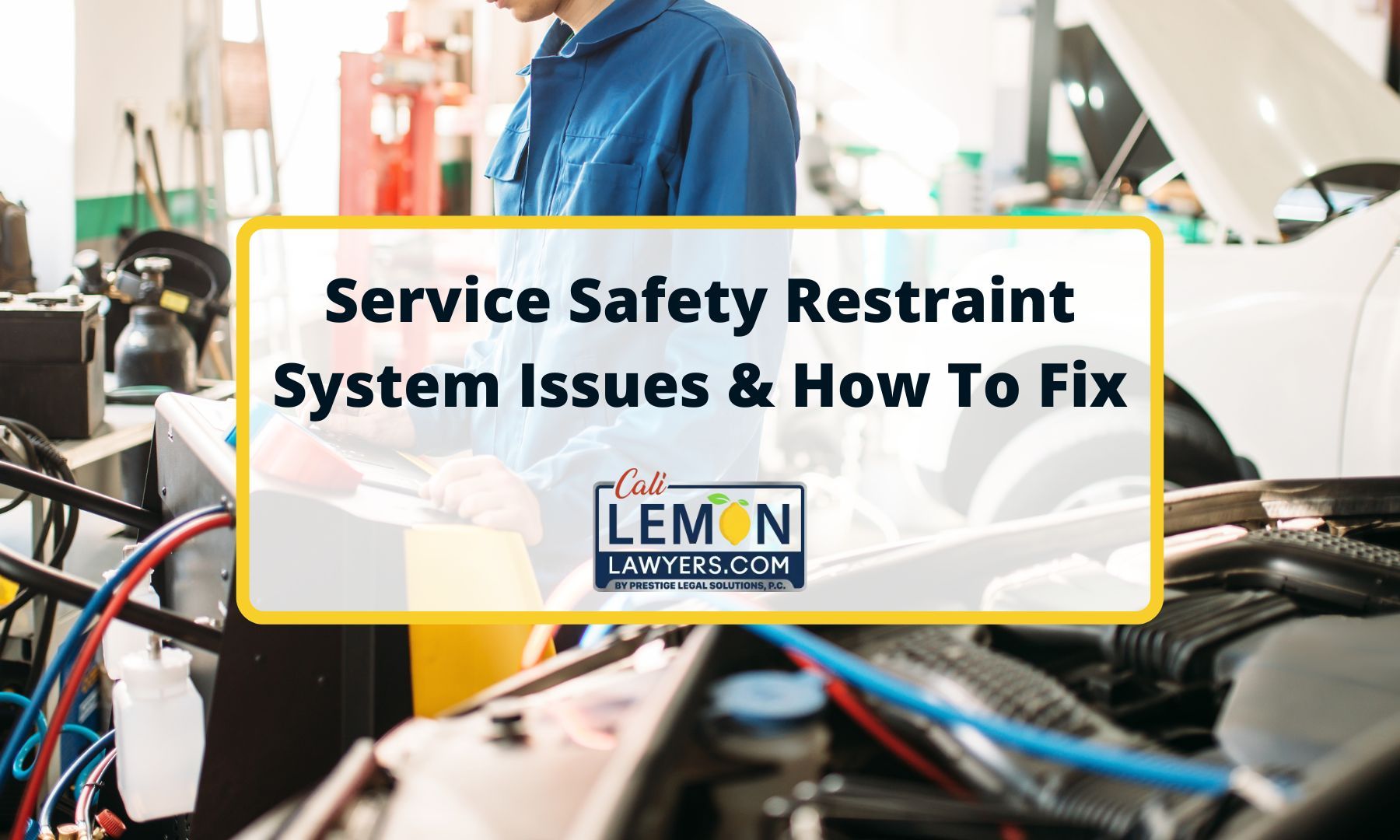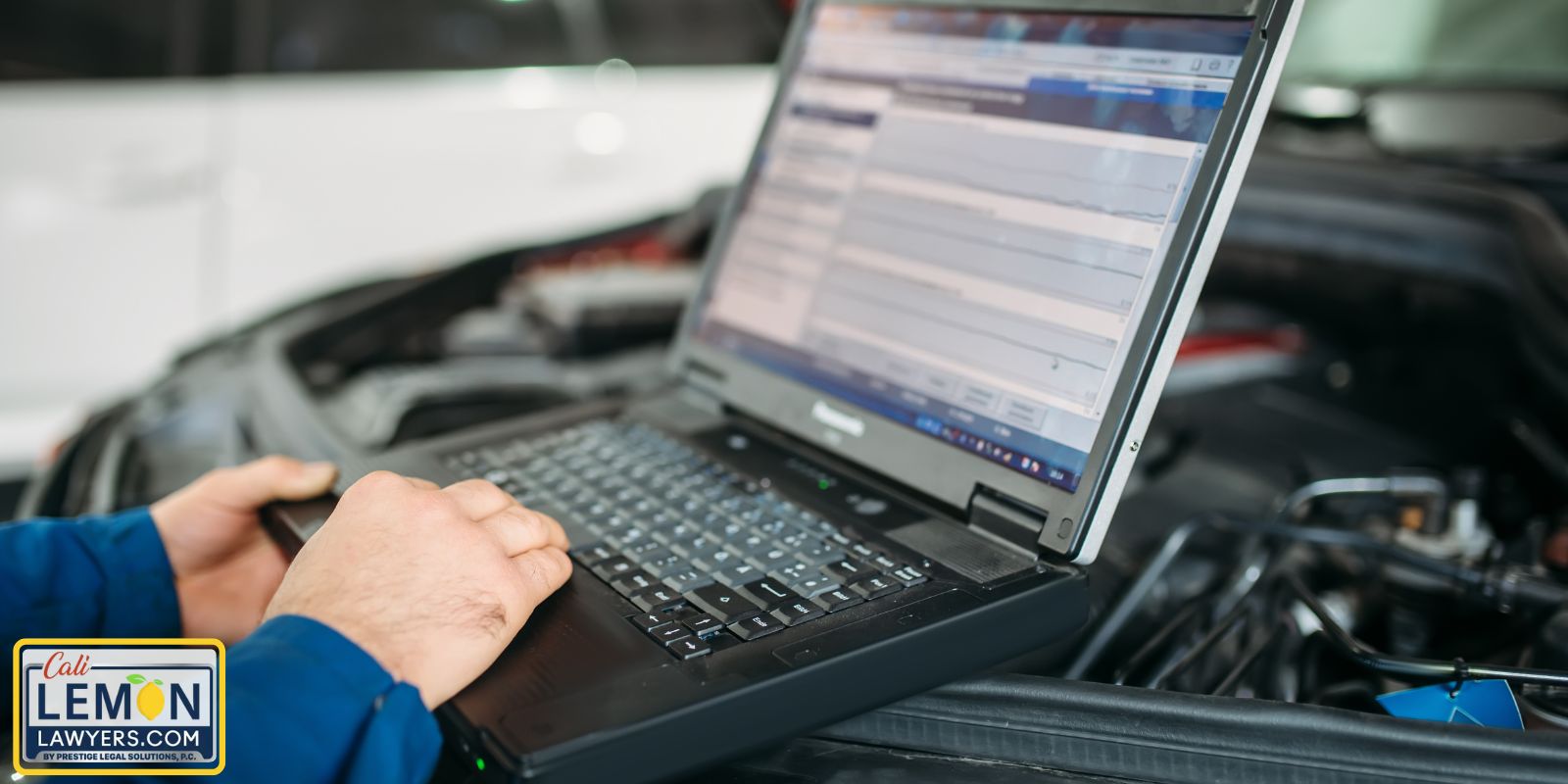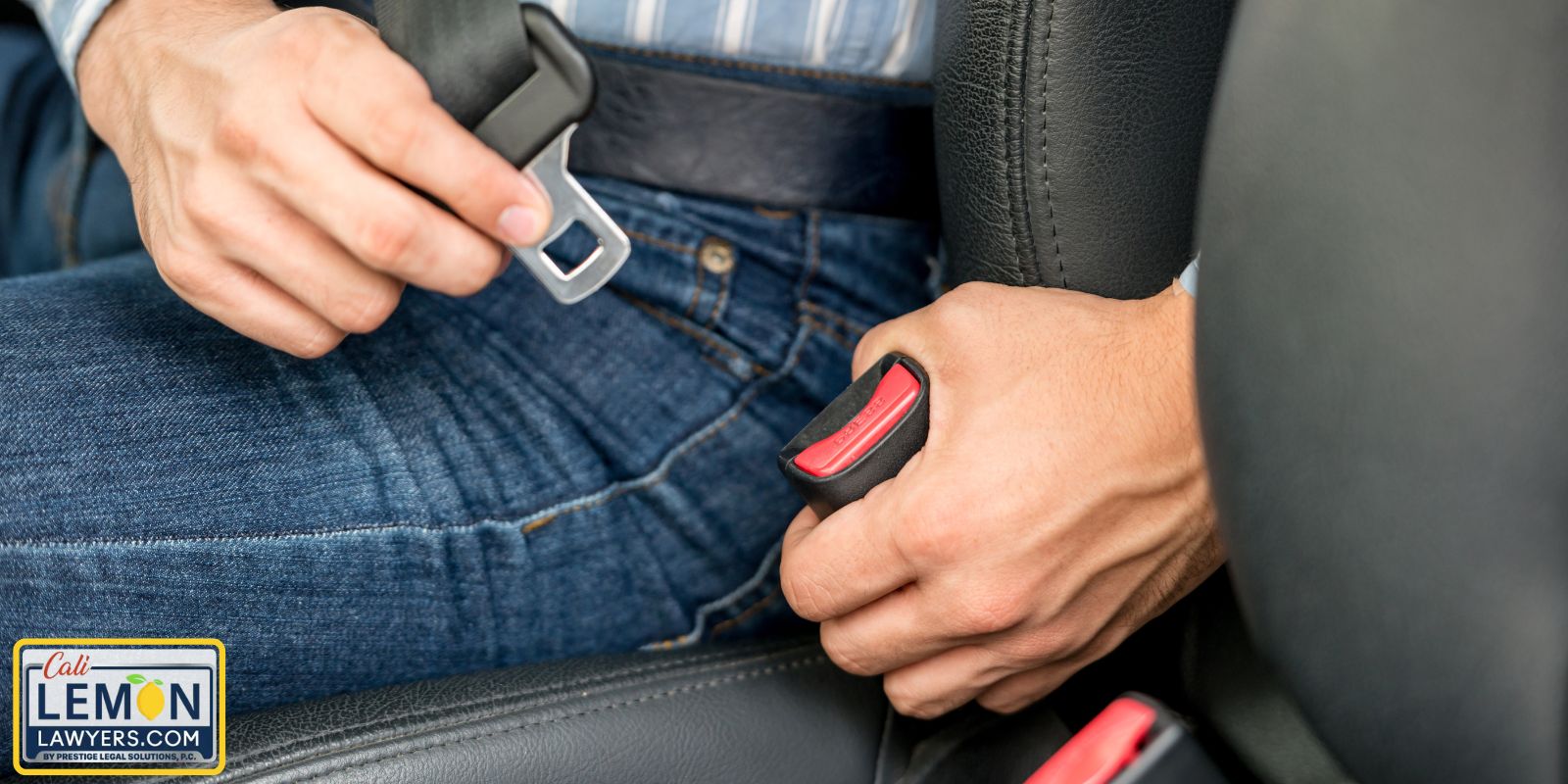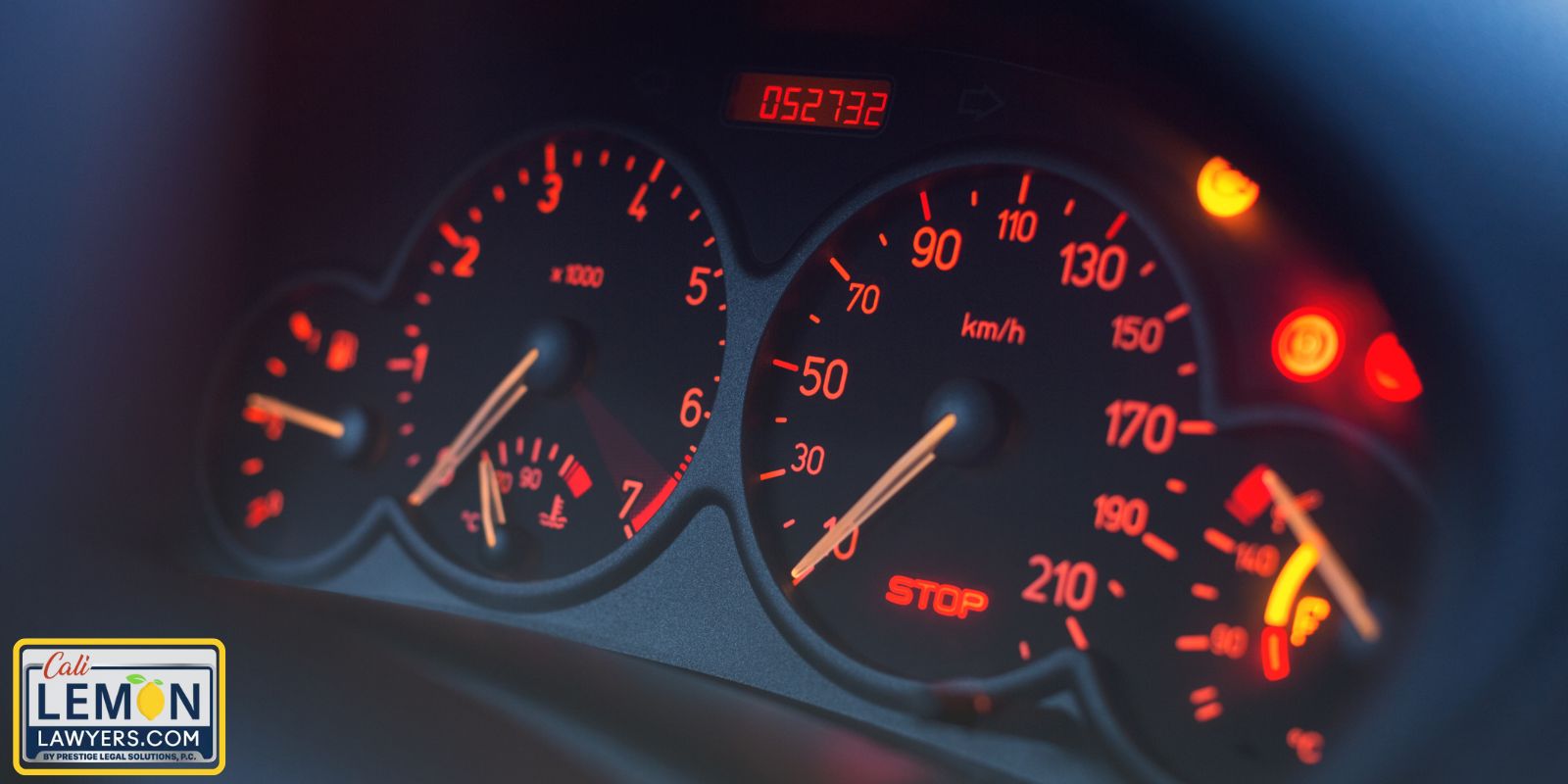
Service Safety Restraint System Issues & How To Fix Them
The Service Safety Restraint System (SSRS) is a collection of safety mechanisms and components. In the event of a collision, these safety mechanisms are designed to protect drivers and passengers. This includes elements such as airbag systems, seat belts, and supplementary systems like the SRS Control Module.
This article will provide an in-depth exploration of the service safety restraint system, what causes the warning light to appear on your car and how to fix it.
If you’ve purchased or leased a car with a defective safety restraint system, we can help you receive compensation at no cost to you. Contact Cali Lemon Lawyers today!
What is the Service Safety Restraint System
The primary components of a safety restraint system consist of airbags and the seat belt pre-tensioner. These two systems work together to provide safety in the event of accidents. If there is braking or a collision the seat belt is automatically tightened by the seat belt pretensioner.
Additionally, an airbag is deployed to prevent your head from hitting the dashboard, steering wheel, or windshield. This safety system plays a role in preventing injuries and offers significant benefits to vehicle owners. A series of sensors and electronic control modules continuously monitor this system.
If any components or sensors related to the safety restraint have any problems they are automatically detected and called out by a warning light (safety restraint system message). The purpose of this message is to inform drivers immediately to prevent any danger.
Common Reasons for Receiving a Safety Restraint System Message and Their Solutions
Some of the most common reasons for receiving a safety restraint system warning include:
Seatbelt Problems
Buckle Issues: The buckle may not latch properly due to dirt or debris.
Solution: If the seatbelt buckle is not latching properly, start by wiping it with a cloth and checking for any blockages. If there is debris in the buckle, try to remove it with a toothpick or other small object. If the buckle is still not latching properly, it may need to be replaced.
Issues with the Retractor: If the passenger seatbelt doesn’t retract properly it could be. The retractor might be experiencing a malfunction.
Solution: To fix this, try allowing the belt to smoothly reel back into the retractor for an inch and a half. Afterward, clean the retractor mechanism as dirt can sometimes get stuck inside causing it to jam. If the retractor is still not working properly, it may need to be replaced.
Airbag System Problems
Faulty Clock Spring: The clock spring is a component located in the steering wheel or column that allows the airbag to deploy properly. If the clock spring is faulty, the airbag may not deploy in the event of a collision.
Solution: To fix this, the clock spring will need to be replaced.
Airbag Module: The airbag module is located beneath the car’s center console area. Moisture or corrosion can impact the airbag module, which is usually situated beneath the car’s center console area.
Solution: A bad airbag sensor might trigger the airbag light to turn on. To fix this, the airbag module will need to be replaced.
Sensors: Sensors play a role in deploying airbags during front-end collisions. If they’re not functioning properly it can inhibit airbag deployment.
Solution: To fix this, check for connections and signs of corrosion. Replace any sensors if needed.
Wiring Concerns
Over time wiring can deteriorate and cause issues like connection problems.
Solution: Over time the battery may become depleted, which could lead to a safety restraint system message. To fix this, consult a professional to help you replace the battery.
Other reasons why safety restraint system (SRS) warning lights or messages may be triggered in car accidents include
SRS backup battery failure: The SRS relies on a battery that operates continuously even when the car is not running. Over time the battery may become depleted, which could lead to a safety restraint system message.
Solution: It is recommended to consult a professional to help you replace the battery.
Faulty SRS computer: If there is a faulty SRS computer it may trigger the SRS light. This can occur due to aging, corrosion, or excessive vibration.
Solution: To fix this, consult a professional to help you replace the battery.
How to Deal with a Service SRS Warning Light
If your vehicle safety restraint system warning illuminates here’s what you should do:
1. Understand the Problem
Check your car’s dashboard for any airbag or seatbelt warning lights; these indicate issues with the SSRS. Physically inspect the belts for signs of wear and tear or damage. Ensure that buckles are properly latched.
2. Check for any Recalls
Sometimes automotive manufacturers acknowledge widespread issues and issue recalls. To check if your vehicle is subject, to a recall visit your country’s transportation or safety website. Directly access the manufacturer’s site using the vehicle’s VIN.
3. Scan for Error Codes
Although you mentioned that no error codes were detected, utilizing a code scanner can help pinpoint the source of the problem. The error message provided by the scanner will offer insights into which component may be malfunctioning.
4. Resetting the System
When it comes to addressing a safety restraint system warning light one initial solution is to reset the system. The reset process involves a few steps.
This step ensures that the system remains active and continually monitors for any problems. There are two methods you can employ; one involves using your ignition key for resetting while the other entails deleting the service src code. This specific reset process may not apply to all vehicles; some models may require a different procedure.
Here are step-by-step instructions for resetting using your ignition key;
- Insert your car keys.
- Turn on the ignition.
- Observe as the SRS light illuminates for seven seconds before turning off.
- Turn off your car engine and use your car keys.
- Wait for three to five seconds. Then repeat steps 1 to 3.
- Once you’ve repeated the steps start your car’s engine.
If you want to delete the service source code option follow these steps to engage a reset;
- Obtain a scanner that has the SRS reset feature.
- Connect the scanner under the dashboard, on the driver’s side.
- Scan for any problem codes.
- Remove the code from the SRS system.
Additionally, after resolving the issue it is crucial to use a tool to reset the SSRS warning light.
You may want to contact a mechanic or professional who is knowledgeable about safety restraint systems and can provide guidance.
Regularly inspect seat belts and other components of the SSRS (Safety Restraint Systems) for signs of wear. Ensure they latch and retract correctly. Be cautious not to spill liquids around the center console area where many electrical components of the system are located.
Why The Service Safety Restrain System is Important
Standards and testing play a role in ensuring that service safety restraint systems effectively protect vehicle occupants during accidents and collisions.
Here is an overview of some of the standards and testing measures involved with SSRS (Safety Restraint Systems).
1. The Federal Motor Vehicle Safety Standards (FMVSS)
These are regulations implemented by the National Highway Traffic Safety Administration (NHTSA) in the United States. These regulations cover aspects of vehicle safety including the use of safety restraint systems. FMVSS 208 sets guidelines, for protecting vehicle occupants during crashes specifying requirements for seat belts and airbags. Compliance with FMVSS is mandatory to ensure a level of safety across all vehicles in the US.
If your car is not up to standard, learn what you can do by reading our article on the Lemon Law Regarding New Cars and Replacement Vehicles.
2. Crash Testing
The evaluation of safety restraint systems involves crash testing, where vehicles and their safety features are subjected to collision scenarios. Designed crash test dummies equipped with sensors are used to measure the impact on humans during these crashes.
Learn more about Collision Mitigation Systems here.
3. Dynamic Testing
To assess how well a product can withstand crashes dynamic testing is conducted. This involves simulating real-world crash scenarios within controlled environments in testing facilities. These tests assess how well components of safety restraint systems like seat belts and airbags perform under vehicle speeds and impact conditions.
4. Component Testing
Individual components of safety restraint systems, such, as seat belts, airbags, and sensors undergo testing to ensure their reliability and durability. This includes conducting safety tests to evaluate seat belt strength, airbag deployment times, sensor accuracy, and electronic control unit performance.
5. Environmental Testing
To ensure the durability of safety restraint components, in conditions, such as temperature fluctuations, humidity, and chemical exposure they undergo environmental testing. This testing guarantees that the service safety restraint system remains functional in environments.
Challenges and Controversies
Given the complexity of a technology like the service safety restraint system, it is expected to face challenges and controversies.
- False Alarms and Sensor Issues: One significant challenge with the SSRS is alarms and malfunctioning sensors. Since the system heavily relies on sensors to detect and diagnose issues this can lead to costs and pose a significant risk of potential injuries.
- Instances of Inadequate Safety Restraints: There have been cases where safety restraints have failed or been considered inadequate. Naturally, these instances erode trust in the service safety restraint system.
- Public Resistance Towards Mandated Restraint Usage: As we’ve seen since their introduction restraint systems have faced backlash—primarily seat belts. Improper utilization or complete disregard for restraint systems diminishes the effectiveness of service safety restraints.
Conclusion
The presence of a safety restraint system in cars plays an important role in protecting both drivers and passengers during accidents. If you’ve experienced your service safety restraint system warning light, you’ll want to act quickly to understand and fix the underlying cause.
At Cali Lemon Lawyers, we specialize in protecting consumers who have purchased or leased defective vehicles. If you’re having any issues with your car under warranty we encourage you to give us a call and learn how we can help you receive compensation at no out of pocket costs to you!





